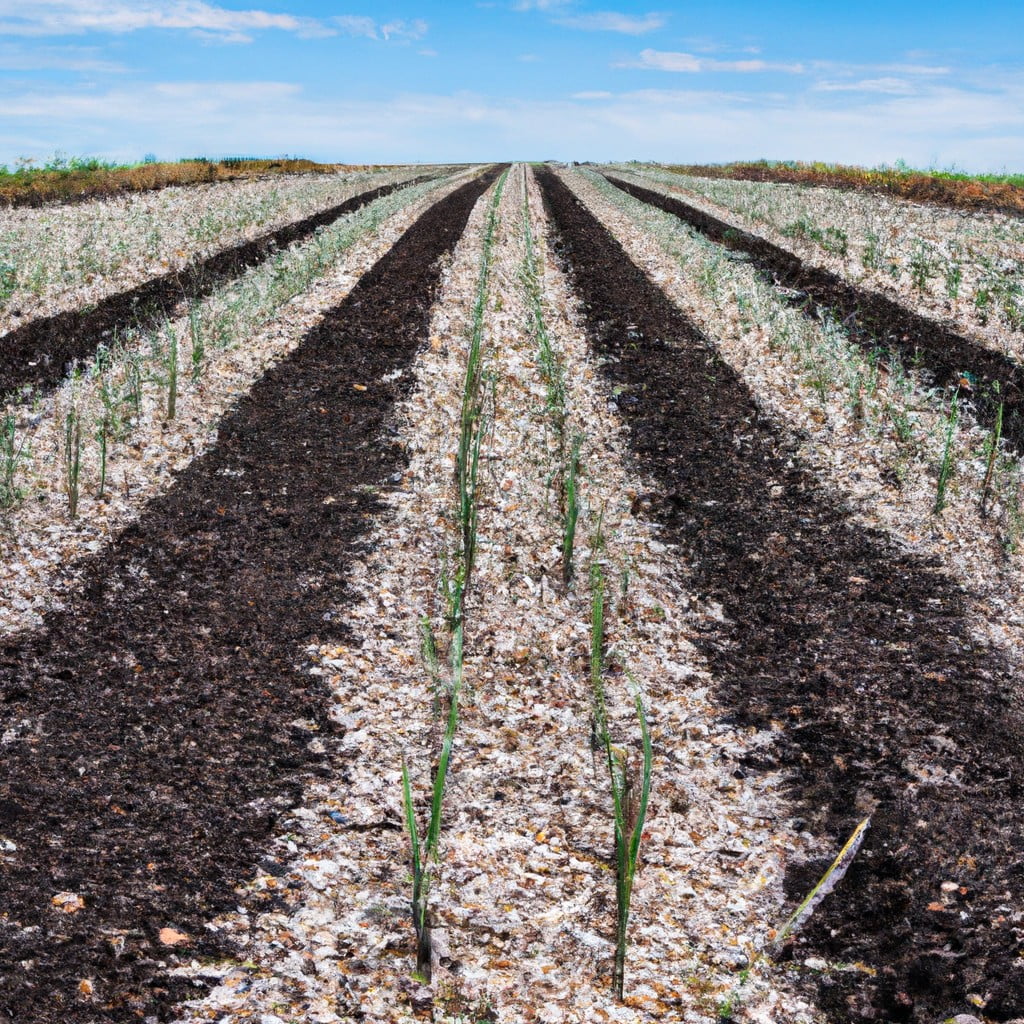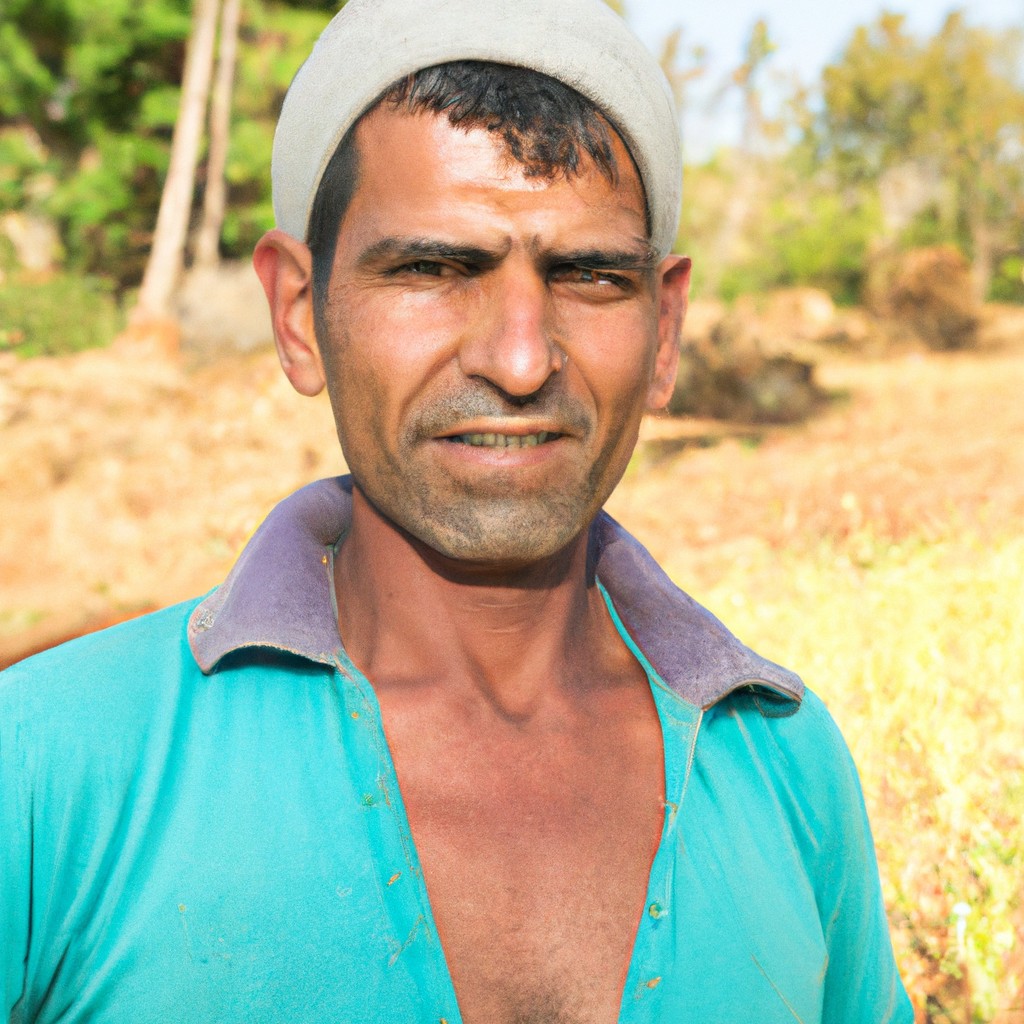Regenerative farming works by using methods that rebuild and revitalize the soil, enhancing its biodiversity and productivity while also sequestering carbon to combat climate change.
Regenerative farming is a dynamic approach to agriculture that focuses on restoring soil health, promoting crop diversity, and enhancing ecosystems. It works by implementing practices that regenerate the soil and the environment rather than depleting them.
This system includes techniques such as no-till farming, cover crops, composting, and rotational grazing.
The ultimate goal of regenerative farming is to create a farming system that not only sustains, but improves the resources it uses.
In the following sections, we will delve deeper into how each of these practices contributes to the overall functioning of regenerative farming.
Key takeaways:
- Regenerative farming rebuilds soil, sequesters carbon, and enhances biodiversity.
- Techniques include no-till farming, cover crops, composting, and rotational grazing.
- Regenerative agriculture prioritizes soil health, crop diversity, and ecosystem enhancement.
- Biodiversity in regenerative farming limits pests, enhances pollination, and improves soil health.
- Regenerative farming improves soil health, reduces carbon emissions, and increases profitability.
Look Inside:
What Is Regenerative Agriculture?

Regenerative agriculture is a holistic farming approach that revitalises the soil by enhancing its biodiversity and productivity. This system values the health of ecosystems and the life cycles of all living organisms involved, focusing intensely on soil health to support a thriving ecosystem.
Unlike traditional farming practices that often lead to soil erosion and depletion, regenerative techniques promote soil replenishment and rejuvenation. This method equates to healthier crops and livestock, creating a more resilient farm ecosystem that contributes positively to the global climate by sequestering carbon emissions.
Understanding Regenerative Agriculture
This concept isn’t new and has roots in indigenous farming methods across civilizations. There are no fixed formulae; rather it’s a series of principles designed to mimic nature.
Unlike traditional farming, it aims to enrich the entire ecosystem, including microorganisms, plants, animals, and people, rather than focusing solely on crop yield.
From intelligent crop rotation and grazing practices to organic composting, every action is aimed at enhancing the soil’s fertility and biodiversity.
By emphasizing nature’s complex relationships, farmers can create more resilient systems, yielding healthier food and reversing environmental damage.
The Key Principles of Regenerative Agriculture
In steering away from the conventional, regenerative agriculture embraces a set of inherent principles that uphold its sustainable philosophy.
One such principle is prioritizing soil health by minimizing soil disruption. Traditional tilling practices are replaced by no-till or low-till methods which prevent soil erosion and promote the organic matter enrichment necessary for soil fertility.
Another principal aspect is the integration of crops and livestock, supporting a biodiverse, resilient ecosystem. Animals graze strategically, enhancing nutrient cycling by depositing manure back into the soil.
Additionally, the significance of agroforestry, encompassing the use of trees and shrubs within crop and livestock fields cannot be undermined. This practice not only fosters biodiversity but also aids in trapping carbon and increasing yield resilience.
Lastly, maintaining a year-round healthy crop cover is essential, not only to feed the soil microbes but also to reduce erosion, capture more sunlight, and increase soil organic matter over time. These indicate not merely principles but a shift in mindset towards working with, rather than against, nature.
Role of Biodiversity in Regenerative Farming
Biodiversity, the variety of life in a particular habitat, plays a crucial role in regenerative practices. By integrating a diverse range of plants and animals, farms can create more resilient ecosystems.
Diverse crop rotations and multi-species cover crops can limit pest and disease outbreaks, reducing the need for chemical inputs. Furthermore, increased on-farm biodiversity enhances pollination and soil nutrient cycling, ultimately boosting crop productivity and overall soil health.
By fostering biodiversity, regenerative farming provides and sustains a multitude of ecosystem services, which in turn ensure a healthy farming landscape and productive agricultural systems.
The Role of Soil Health in Regenerative Farming
In regenerative farming, soil health is of particular importance. Healthy soil is rich in organic matter and teeming with biological diversity, embodying millions of microbes, insects, and worms that enrich the soil and aid plant growth.
This network of organisms is fundamental for nutrient cycling, facilitating plant access to essential nutrients, enhancing water retention, and preventing soil erosion. By fostering soil health, regenerative practices also aid in carbon sequestration, a critical factor in controlling greenhouse gas emissions.
These soil-health-centric practices not only increase farm productivity but also reduce the need for chemical inputs, effectively supporting a more sustainable and resilient food system.
Prioritize Soil Health
To create a resilient agricultural system, restoring and maintaining soil fertility must be at the forefront of farming methods. Healthy soil is teeming with microorganisms and organisms that contribute to its structure, water-holding capacity, and nutrient availability. These factors collectively contribute to plant growth and resilience, reducing the need for synthetic inputs.
Regenerative farming emphasizes practices such as composting, cover cropping, and reduced tillage. Composting returns organic matter back to the soil, promoting the growth of beneficial microbes. Cover cropping prevents soil erosion, suppresses weeds, and improves soil nutrient content. Minimizing soil disturbance, on the other hand, helps preserve its structure and the organisms within.
Through these practices, regenerative farming not only improves the health and fertility of the soil but also enhances its capacity to capture and store carbon from the atmosphere, an essential aspect of combating climate change.
Farming Techniques Employed in Regenerative Agriculture
There are several techniques farmers employ to encourage regeneration. Among them, no-till or reduced tillage practices stand out. These practices reduce soil erosion and promote biodiversity in the soil’s microbiome, which boosts nutrient cycling.
Cover crops represent another essential technique. Not only do they prevent soil erosion during off-seasons, but they also enrich the soil, improve water retention, and manage pest and weed pressure naturally.
Crop rotation and diversity are also integral to the regenerative approach. By varying the types of crops planted, farmers avoid the depletion of specific nutrients and break cycles of pests and diseases.
Livestock are incorporated through rotational grazing. By moving animals frequently, farmers mimic natural systems where grazers consume a diet of diverse plants, which enhances their health and aids in pest management.
Lastly, composting and agroforestry represent further techniques employed by regenerative farmers. These methods increase organic matter in the soil, sequestering more carbon while making farms more resilient to changes in climate.
Regenerative Farming Vs Conventional Farming
Conventional farming often utilizes synthetic fertilizers and pesticides, heavily tills the soil, and cultivates single crops, or monocultures, ultimately leading to soil degradation, decrease in biodiversity, and increased carbon emissions.
On the other hand, regenerative farming bucks these trends by increasing biodiversity, improving soil health, and reducing the use of harmful synthetic inputs.
No-till or reduced tillage is a notable practice in regenerative agriculture, helping reduce soil erosion and maintain soil structure and nutrient content.
Furthermore, it incorporates cover crops to prevent soil erosion, retain moisture, and enhance soil fertility.
It’s also notable for crop rotation and diversification, breaking pest and disease cycles and boosting ecosystem resilience.
By reintegrating livestock, regenerative farming also recycles nutrients and improves soil fertility, contributing to a closed-loop system that mimics natural ecosystems.
Overall, regenerative farming posits a holistic approach to agriculture, where each element of the farm contributes to the health and productivity of the whole system.
In contrast, conventional farming tends to treat the farm as a factory, focusing on maximizing short-term production often at the expense of long-term sustainability.
Crops and Livestock Integration in Regenerative Agriculture
Well-managed integration of livestock into crop farming is enlightening its ample benefits. Livestock graze on cover crops and pastures, delivering two major returns: soil health enhancement and economic profitability.
The animals’ natural behavior contributes to soil aeration, helping break up hard soil layers. Their manure provides organic material and beneficial microbes, promoting soil fertility. This symbiotic relationship reduces chemical input reliance, minimizes nutrient runoff, and boosts overall productivity and farm resilience.
Such an integrated system favours biodiversity, effectively creates a closed-loop system, and demonstrates sustainability in action.
Transitioning From Traditional to Regenerative Agriculture
Making the shift requires significant changes in both mindset and practice. The initial step involves gradually reducing the reliance on synthetic fertilizers and pesticides, thus allowing soil microbes to recover. Then, farmers incorporate more plant diversity into their crop rotations, effectively improving soil fertility and pest resistance.
Livestock, too, play a crucial role – their manure serves as a natural fertilizer, while their grazing patterns stimulate plant growth.
However, it’s important to avoid abrupt transitions. Instead of an overnight change, farmers should incrementally adopt regenerative strategies over several growing seasons. They must monitor these tactics’ effects on crop yield and soil health, adjusting accordingly. Patience is necessary as soil ecosystems take time to heal and rebuild.
Successful transition also requires adequate training and support for farmers to understand these new techniques and apply them effectively.
Importantly, collaboration with local universities, agriculture extension services, and farmer support groups can provide invaluable resources and advice during this transition period. Ultimately, transitioning to regenerative farming can yield substantial benefits for the farm and the planet, despite the initial challenges faced.
Why Regenerative Farming Is Essential?
Balancing ecosystems, enriching soil health, and fostering biodiversity, regenerative farming presents a sustainable solution to feed the world while combating climate change.
Traditional farming methods have resulted in soil degradation, reduced crop nutrient content, and increased carbon emissions.
In contrast, regenerative agriculture enhances soil vitality, leading to more nutrient-rich crops and greater carbon sequestration, actively diminishing the impact of farming on global warming.
It also encourages a symbiotic relationship between animals and plants, promoting mutual survival and efficiency.
By mitigating the harmful effects of conventional farming, regenerative agriculture proves vital to the planet’s sustainable future.
The Impact of Regenerative Farming On Climate Change
Regenerative farming not only bolsters agricultural productivity, but it constitutes a potent strategy to combat climate change.
By enhancing soil’s capacity to capture and store carbon through photosynthesis, regenerative practices effectively contribute to the reduction of greenhouse gases in the atmosphere.
Concurrently, methods such as the use of cover crops, organic mulch, and crop rotation increase soil resiliency, enabling it to weather the effects of erratic rainfall patterns and rising temperatures linked to climate change.
Moreover, biodiversity enhancements through this farming model provide further climate benefits by offering natural pest control and pollination services, thus reducing reliance on synthetic pesticides and fertilizers, which often contribute to carbon emissions.
Hence, regenerative farming’s influence is dual-fold, mitigating climate change impacts while cultivating resilience against its adverse effects in agriculture.
Improve Soil Health to Mitigate Climate Change Impacts
Soil health reinforces the capacity of soil to function as a vital living ecosystem that can withstand climate disturbances, sequestering carbon, and reducing greenhouse gas emissions. Practices pertaining to regenerative farming, such as cover cropping, composting, and minimized tilling, help sequester carbon by promoting the growth of soil organisms. These organisms capture carbon from the atmosphere and store it in the soil. By rejuvenating the land, we can enhance the soil’s carbon capturing capabilities, thus playing a role in reducing the impact of climate change.
Not only does improved soil health help mitigate climate change, but it also benefits the farmer. Healthy soil enriches crop nutrition, enhances crop resistance to pests and diseases, and improves crop resilience to weather extremes. Furthermore, better soil health can improve water quality by reducing water pollution caused by soil erosion and nutrient run-off. Consequently, improving soil health is a win-win move: it addresses climate change while advancing agricultural productivity.
Challenges Faced in Implementing Regenerative Agriculture
Transition to regenerative practices can pose initial financial burdens for farmers because it involves a significant shift from conventional methods. Learning new techniques, acquiring necessary tools, and waiting for ecosystems to restore may affect short-term yields.
High labor costs and lack of technical support are also challenges. Market pressures to produce cheaply and at large scales can discourage farmers from adopting these practices.
Lasty, lack of awareness and understanding about regenerative agriculture among consumers may hinder demand for foods produced using these methods.
However, overcoming these challenges through education, supportive policy, and commercial incentives can make regenerative agriculture a financially viable, sustainable, and effective solution for the future of farming.
The Economic Benefits of Regenerative Farming
When practiced effectively, regenerative farming can drastically cut costs by reducing the dependency on expensive synthetic fertilizers and pesticides. Healthier soil, resultant of these farming techniques, retains water more efficiently, cutting irrigation costs during dry seasons.
Additionally, farmers have the potential to tap into high-value markets – organic and ‘regeneratively grown’ products often command higher prices, increasing the profitability per acre. Decentralizing production by integrating crops and livestock also adds additional revenue streams, creating further financial resilience and making farms more economically sustainable.
Finally, regenerative practices can open up opportunities for carbon trading and other ecosystem service payments, providing farmers with an added income avenue that further supports their regenerative transition.
Government Policies and Influence On Regenerative Farming
As custodians of land policy, governments have a significant role to play in promoting regenerative farming. They can implement subsidies to farmers who apply regenerative practices, making the shift financially feasible. Changes in taxation policies can further support this, by offering tax credits or breaks for those engaging in soil-enriching farming methods.
Additionally, research and development funding can be directed towards studying the efficacy and scalability of these agricultural practices. This can create convincing evidence of the economic and environmental benefits of regenerative farming, which can further encourage its adoption.
Finally, through setting and enforcing sustainable land management regulations, governments can discourage practices that degrade the soil and instead foster ones that enhance biodiversity and soil health. Since regenerative farming inherently supports these objectives, such policies can indirectly promote its implementation.
Thus, through adept manipulation of their policy tools, governments can significantly influence the widespread adoption of regenerative farming.
How Consumers Can Support Regenerative Agriculture
Consumers play a pivotal role in supporting the shift towards regenerative farming practices. By purchasing products labeled as regeneratively-grown, consumers can directly support farmers who are committed to these sustainable growing methods. By doing so, consumers are not only investing in their own health but also in the long-term health of our planet.
Additionally, consumers can further support this cause by staying informed about the issues regenerative agriculture seeks to address and then advocating for changes in agricultural policy that support regenerative farming practices. When consumers demand transparency and sustainability from food producers, the industry takes notice and responds.
In essence, every purchase made is a vote for the type of agriculture methods consumers want to be supported. Therefore, more informed choices can create a groundswell of support for regenerative farming.
FAQ
How is regenerative farming done?
Regenerative farming is implemented by maintaining continuous ground cover using mulching, cover crops, and pastures, and integrating biodiversity to foster healthier soils with enhanced water and nutrient retention capacities.
How do regenerative farmers make money?
Regenerative farmers augment their income by receiving higher premiums for their crops through certifications, direct selling of grain as seed or feed to consumers, and diversifying their fields to cultivate more than just single crops.
What are the principal techniques utilized in regenerative farming?
Regenerative farming principally uses techniques such as cover cropping, no-till farming, organic production, diversified crop rotations and livestock integration to enhance biodiversity, enrich soils, improve watersheds, and capture carbon.
How does regenerative farming contribute to climate change mitigation?
Regenerative farming contributes to climate change mitigation by improving soil health to enhance its capacity to sequester carbon, reducing reliance on fossil fuel-dependent synthetic fertilizers and pesticides, and enhancing overall biodiversity.
What are the key differences between conventional farming and regenerative farming?
Conventional farming often uses synthetic fertilizers, pesticides, and monoculture systems, whereas regenerative farming focuses on soil health, biodiversity, and natural ecosystem processes.




